Introduction
Navigating office dress codes can be a daunting task, especially with the evolving definitions of business casual across different workplaces. Striking the right balance between professionalism and personal style is essential to make a positive impression while feeling comfortable and confident. Whether you’re new to the corporate world or transitioning from a more formal dress code, understanding how to master business casual attire is key to dressing appropriately for various office environments. This comprehensive guide explores the nuances of business casual, offering outfit ideas, styling tips, and practical advice to help you navigate office dress codes with style and ease.
Understanding Business Casual
What is Business Casual?
Business casual is a dress code that blends professional attire with a more relaxed and comfortable style. It allows for greater flexibility in clothing choices compared to traditional business formal wear, while still maintaining a polished and put-together appearance. The exact definition of business casual can vary depending on the industry, company culture, and regional norms, but the core idea is to present yourself in a manner that is both professional and approachable.
About the Author and My Trend Boutique
Key Elements of Business Casual
- Tailored Fits: Clothing that fits well and flatters your body shape is essential. Avoid overly tight or baggy garments.
- Neutral Colors: Shades like black, navy, gray, white, and beige are staples, providing a versatile base for various outfits.
- Quality Fabrics: Opt for materials such as cotton, wool, silk blends, and linen that offer comfort and durability.
- Minimalist Designs: Simple and clean lines contribute to a sophisticated look without being too flashy.
- Appropriate Footwear: Shoes should be polished and professional, ranging from loafers and ballet flats to low-heeled pumps.
Outfit Ideas for Business Casual
1. Blazer and Trousers
Why It’s Perfect:
A well-fitted blazer paired with tailored trousers is a classic business casual ensemble. It exudes professionalism while allowing room for personal style through colors and patterns.
How to Style:
- Top: Wear a crisp button-down shirt or a lightweight blouse.
- Bottom: Choose tailored trousers in a complementary color.
- Footwear: Opt for loafers, oxfords, or low-heeled pumps.
- Accessories: Add a statement necklace or a silk scarf for a touch of elegance.
2. Skirt and Blouse
Why It’s Perfect:
A pencil skirt paired with a stylish blouse creates a feminine and professional look. It’s versatile and can be easily adjusted for different office settings.
How to Style:
- Top: Select a blouse with subtle patterns or in a solid color.
- Bottom: Pair with a knee-length pencil skirt in a neutral shade.
- Footwear: Wear with closed-toe heels or flats.
- Accessories: Incorporate delicate jewelry and a structured handbag.
3. Smart Jeans and a Sweater
Why It’s Perfect:
In more relaxed office environments, smart jeans can be incorporated into business casual attire when paired with the right pieces. A well-fitted sweater adds sophistication to the look.
How to Style:
- Top: Choose a fine-knit sweater or a cashmere pullover.
- Bottom: Wear dark-wash, straight-leg or skinny jeans.
- Footwear: Pair with ankle boots or sleek loafers.
- Accessories: Add a leather belt and minimalist jewelry to elevate the outfit.
4. Shift Dress
Why It’s Perfect:
A shift dress is a versatile and comfortable option that works well in various office settings. Its loose fit provides ease of movement while maintaining a professional appearance.
How to Style:
- Dress: Select a shift dress in a solid color or subtle print.
- Footwear: Opt for classic pumps or ballet flats.
- Accessories: Complement with a structured tote bag and simple jewelry.
5. Cardigan and Chinos
Why It’s Perfect:
Layering a cardigan over a blouse or shirt paired with chinos offers a polished yet comfortable look suitable for transitional weather and casual office environments.
How to Style:
- Top: Wear a button-down shirt or a patterned blouse.
- Bottom: Choose slim-fit chinos in a neutral color.
- Footwear: Select loafers, brogues, or comfortable flats.
- Accessories: Add a watch and a leather belt for a refined touch.
Accessorizing Your Business Casual Look
1. Statement Jewelry
Bold necklaces, elegant earrings, and sophisticated bracelets can add personality to your outfit without overwhelming it. Choose pieces that complement your attire and reflect your personal style.
2. Stylish Bags
A structured handbag or a sleek tote can enhance your business casual ensemble while providing functionality. Opt for neutral colors for maximum versatility or add a pop of color to make a statement.
3. Belts
A quality belt can define your waist and add a polished finish to your outfit. Choose belts in classic colors like black, brown, or tan to match your shoes and other accessories.
4. Scarves and Shawls
Lightweight scarves or shawls can add a layer of sophistication and warmth to your outfit. They also offer an opportunity to incorporate patterns and colors into your look.
5. Footwear
Shoes play a crucial role in completing your business casual outfit. Choose styles that are comfortable for all-day wear and appropriate for your office environment, such as loafers, ballet flats, low heels, or ankle boots.
Practical Considerations
1. Office Environment
Understanding the specific dress code of your workplace is essential. Some offices may have a more relaxed approach to business casual, while others may require a higher level of formality. Observe how colleagues dress and adjust your wardrobe accordingly.
2. Body Shape
Choose clothing that flatters your body type. For instance, high-waisted trousers can elongate the legs, while A-line skirts can accentuate the waist and hips. Tailored fits enhance your silhouette and provide a polished appearance.
3. Seasonal Adaptations
Adapt your business casual wardrobe to different seasons by incorporating appropriate fabrics and layering techniques. In warmer months, opt for breathable fabrics like cotton and linen, while in colder months, incorporate sweaters, cardigans, and tailored outerwear.
4. Versatility
Select pieces that can be easily mixed and matched to create multiple outfits. Neutral colors and classic styles offer the greatest flexibility, allowing you to transition seamlessly from day to night or from casual to slightly more formal settings.
Tips for Building a Business Casual Wardrobe
- Invest in Timeless Pieces: Classics like a well-fitted blazer, tailored trousers, and versatile dresses form the foundation of a business casual wardrobe.
- Choose Quality Fabrics: High-quality materials not only look better but also last longer, ensuring your wardrobe remains stylish and durable.
- Embrace Neutral Colors: Neutrals are easy to mix and match, providing a versatile base for your outfits.
- Incorporate Statement Pieces: Add a few standout items, such as a bold necklace or a patterned blouse, to infuse personality into your outfits.
- Prioritize Fit: Well-fitted clothing enhances your appearance and boosts your confidence, making you look polished and professional.
- Accessorize Thoughtfully: Use accessories to elevate your outfits without overdoing it, maintaining a balanced and sophisticated look.
Caring for Your Business Casual Clothes
Proper maintenance ensures that your business casual attire remains in excellent condition, preserving its appearance and longevity.
1. Washing Instructions
Follow the care labels on your garments to prevent damage. Hand wash delicate items and machine wash more durable pieces using gentle cycles and appropriate detergents.
2. Proper Storage
Store your clothes on sturdy hangers to maintain their shape. Use garment bags for delicate items and keep your wardrobe organized to avoid wrinkles and damage.
3. Ironing and Steaming
Iron your clothes as needed, paying attention to the fabric type to avoid scorching. Use a steamer for delicate fabrics to remove wrinkles without direct contact.
4. Repair and Maintenance
Address any signs of wear and tear promptly. Mend loose buttons, repair small tears, and refresh fabrics to extend the life of your wardrobe.
5. Seasonal Rotation
Rotate your wardrobe seasonally to prevent excessive wear on your favorite pieces. Store off-season clothing properly to keep them in pristine condition.
Picture Gallery
Conclusion
Mastering business casual attire is about finding the right balance between professionalism and personal style. By understanding the key elements, selecting versatile and quality pieces, and accessorizing thoughtfully, you can navigate office dress codes with ease and confidence. A well-curated business casual wardrobe not only enhances your appearance but also boosts your confidence, allowing you to perform your best in any professional setting.
Embrace the versatility and sophistication of business casual attire, and let your wardrobe reflect your personal style and professionalism. With these tips and outfit inspirations, you’re well-equipped to create stylish and appropriate looks for any office environment.
Happy styling, and may your business casual outfits empower you to shine in every professional setting!
5 FAQs
1. What are the essential pieces for a business casual wardrobe?
- Answer: Essential pieces include a tailored blazer, high-waisted trousers, A-line skirts, versatile blouses, well-fitted jeans, comfortable yet stylish shoes, and a selection of minimalist accessories. These items form the foundation of a business casual wardrobe and can be mixed and matched to create various outfits.
2. How can I make my business casual outfit stand out?
- Answer: Incorporate statement accessories such as bold jewelry, a unique handbag, or a patterned scarf. Opt for a pop of color in your blouse or shoes, or choose a garment with interesting details like ruffles or embroidery. These elements add personality and elevate your overall look without compromising professionalism.
3. Is it acceptable to wear jeans in a business casual office?
- Answer: In many modern office environments, well-fitted, dark-wash jeans are acceptable as part of a business casual outfit. Pair them with a tailored blazer, a crisp blouse, and appropriate footwear to maintain a polished appearance. However, it’s essential to understand your specific workplace’s dress code before incorporating jeans into your wardrobe.
4. What types of shoes are appropriate for business casual attire?
- Answer: Appropriate shoes for business casual attire include loafers, ballet flats, low-heeled pumps, brogues, and stylish ankle boots. Choose shoes that are comfortable for all-day wear and match the formality of your outfit. Avoid overly casual footwear like sneakers or flip-flops unless your office specifically allows them.
5. How can I transition my business casual outfits from day to night?
- Answer: To transition your business casual outfit from day to night, add a statement piece such as bold jewelry or a sleek clutch. Swap flats for heels or switch to more elegant footwear. Incorporate a stylish blazer or a chic jacket, and consider using a darker lip color or more dramatic makeup to elevate your look for evening events.
Picture Gallery




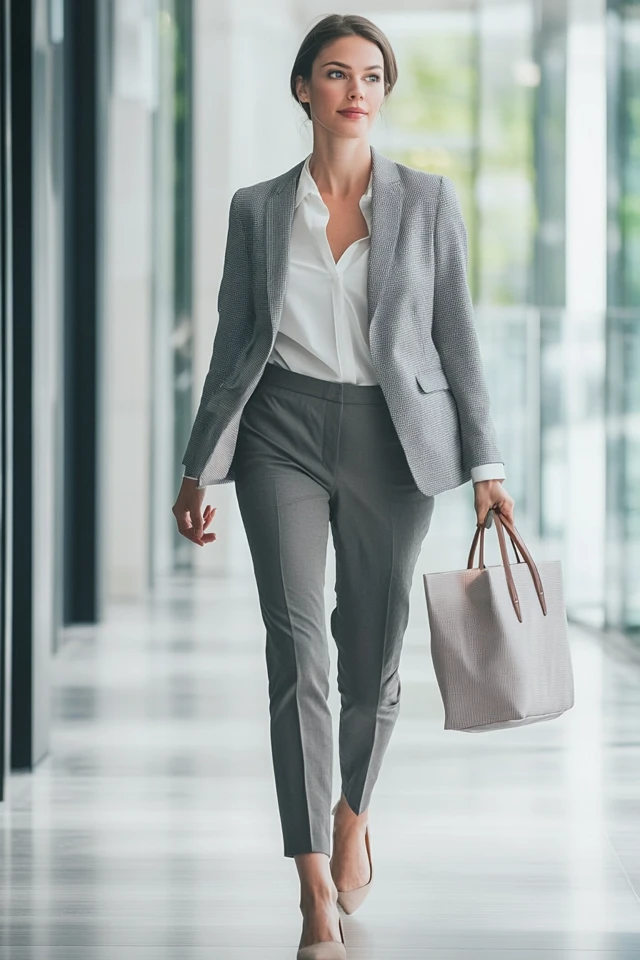


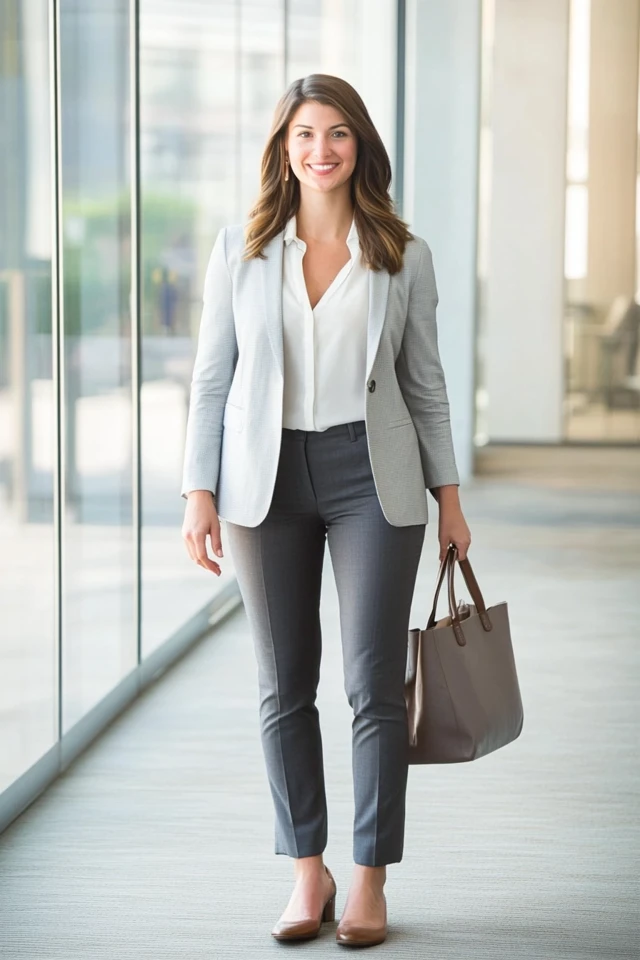
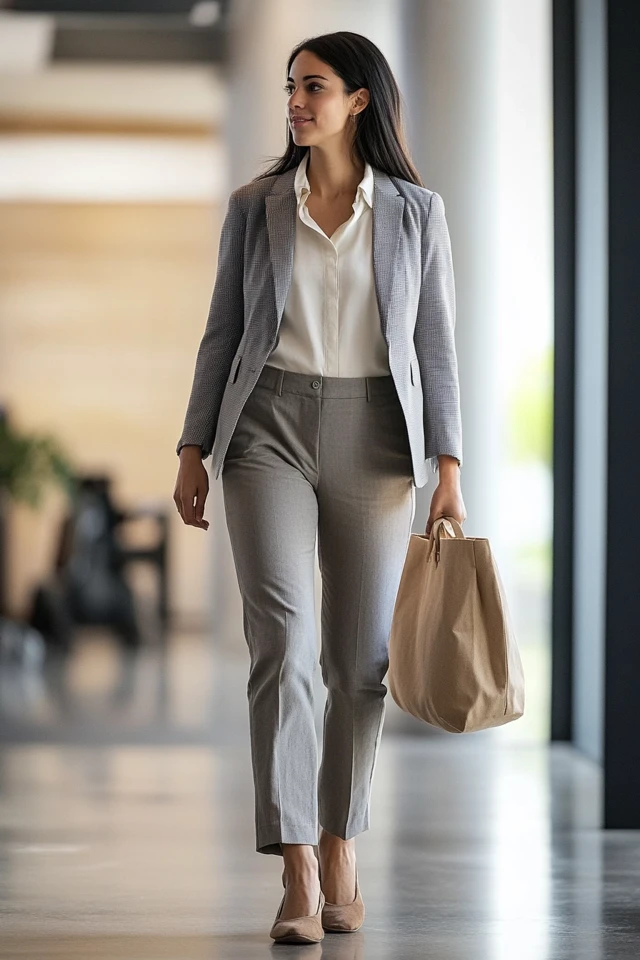
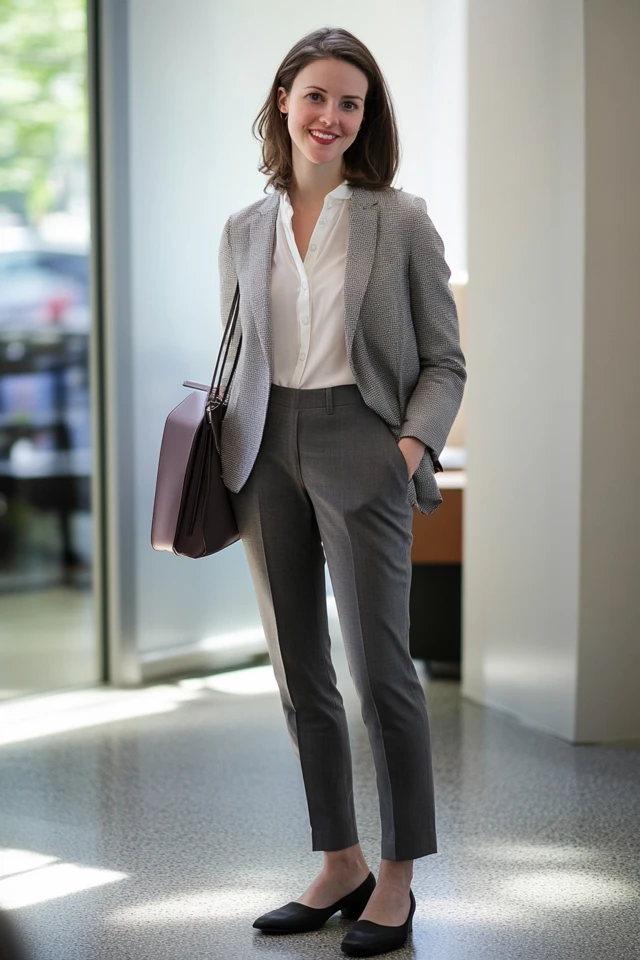

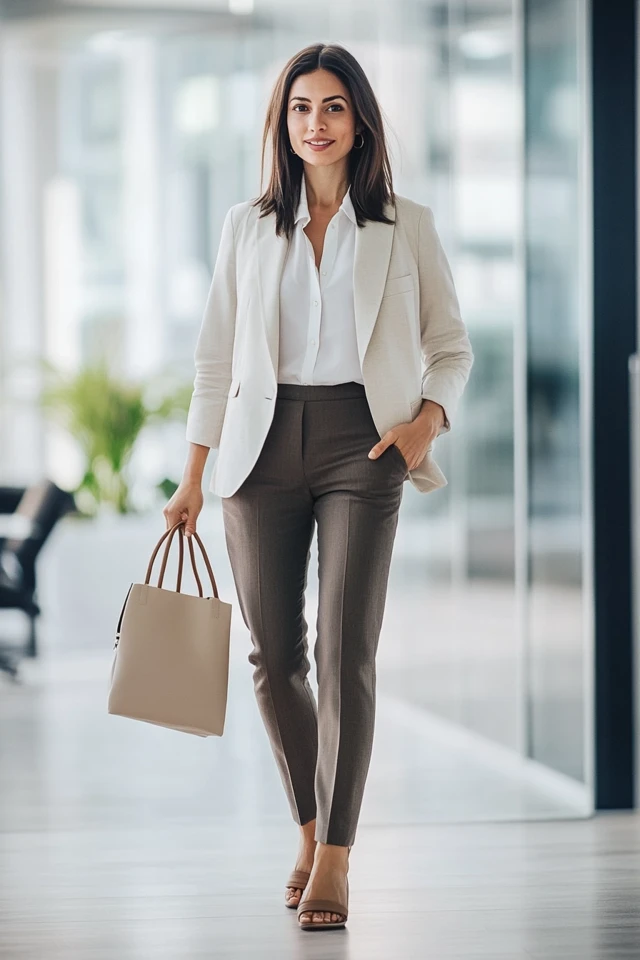
Conclusion
Navigating office dress codes with style is achievable through a well-thought-out business casual wardrobe. By investing in versatile, high-quality pieces and understanding how to style them appropriately, you can create a range of outfits that suit various professional settings and personal preferences. Embrace the balance of comfort and sophistication that business casual offers, and let your attire reflect your professionalism and personal flair.
Happy styling, and may your business casual looks inspire confidence and elegance in every professional interaction!


